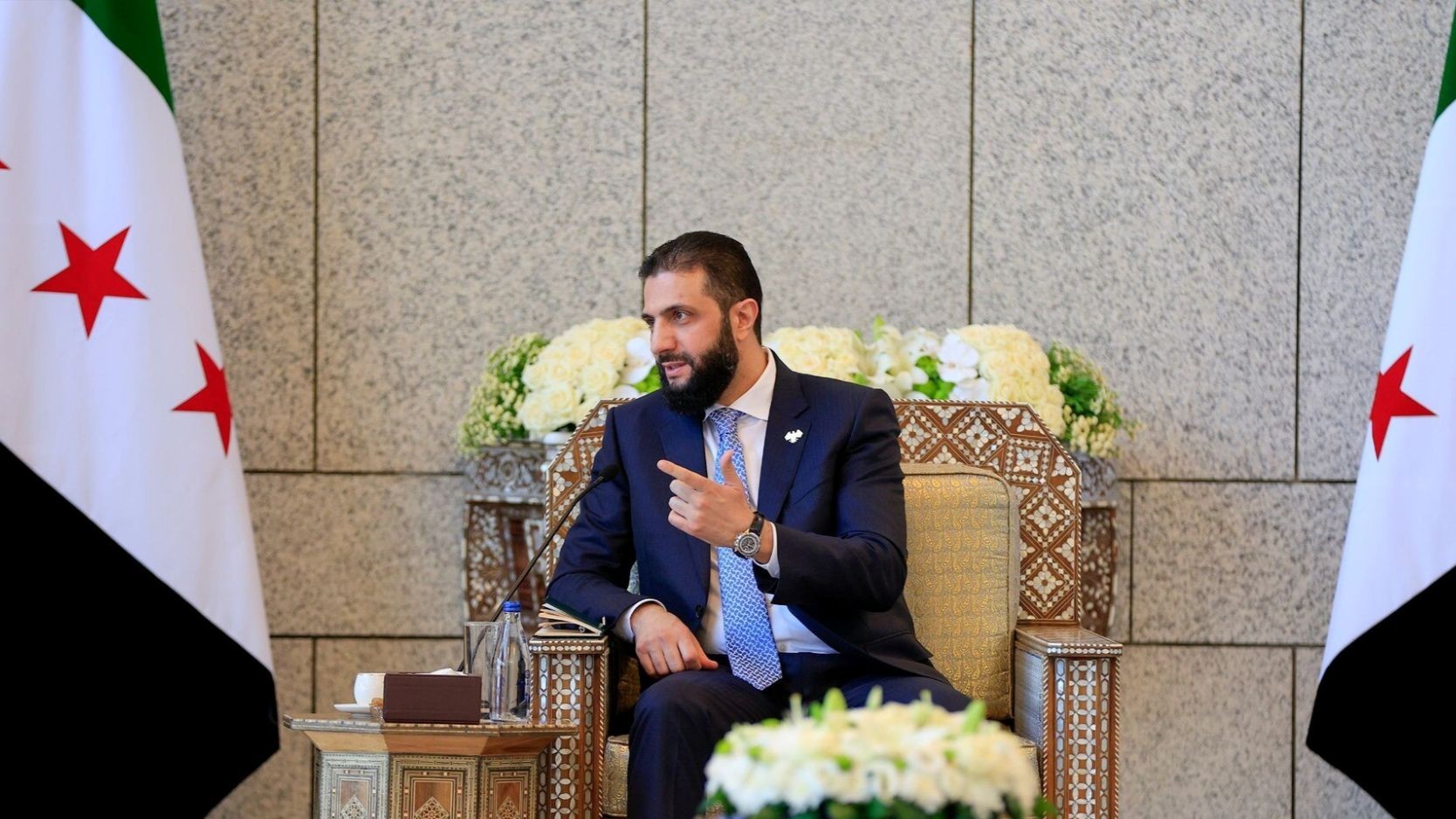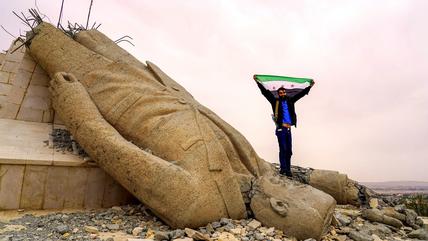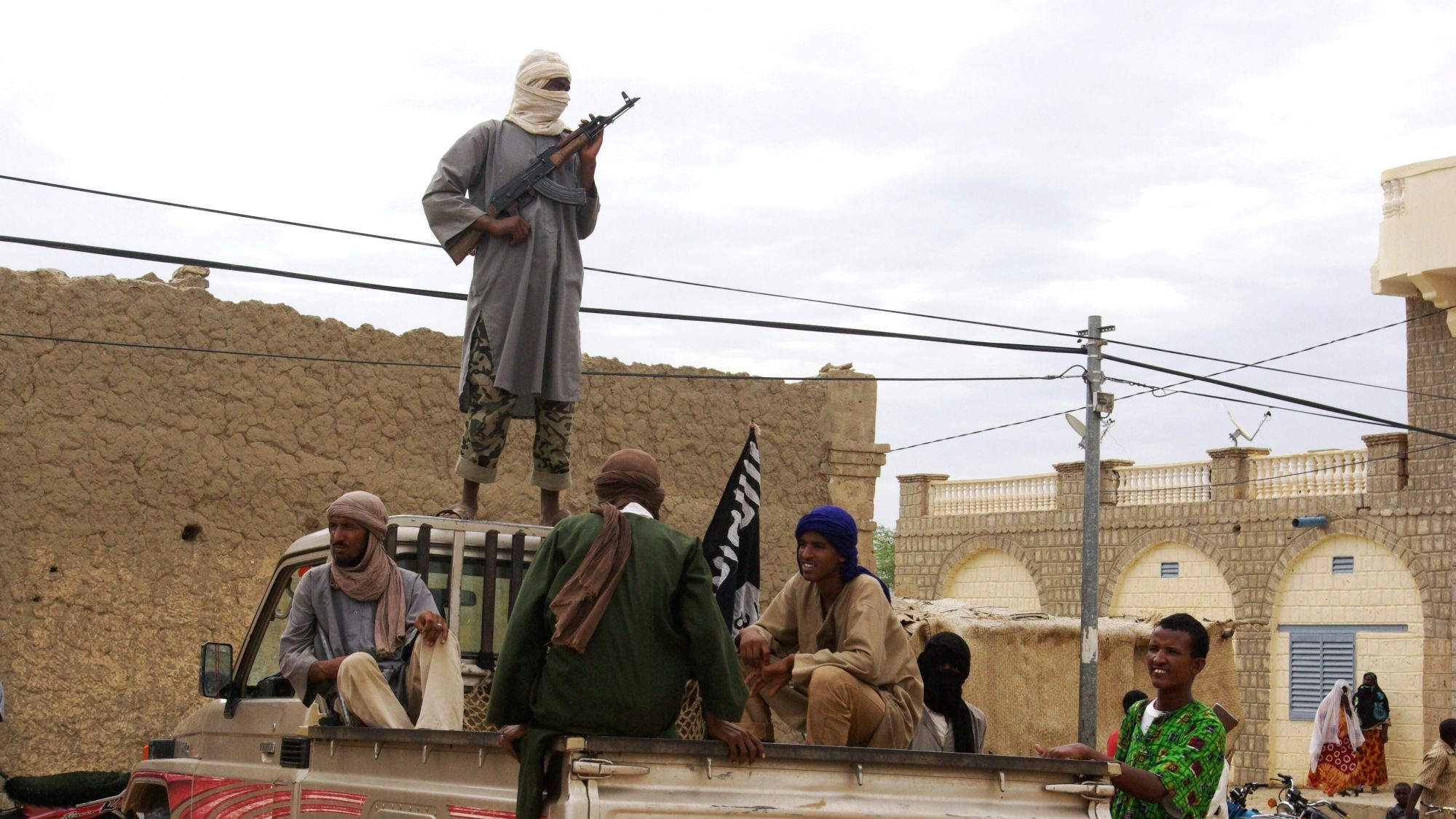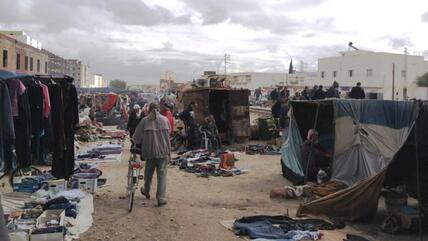Al-Sharaa and the global jihad

Syria's Foreign Minister Asaad al-Shaibani is pursuing intensive and skilful diplomacy aimed at establishing the Hayat Tahrir al-Sham (HTS) organisation, or at least the Syrian transitional government which is made up of HTS members, on the international stage.
He has reason to celebrate: in May, US President Donald Trump shook hands with Syrian President Ahmad al-Sharaa in the presence of the Saudi Crown Prince, and announced that sanctions against Syria would be suspended. On 30 June, this came into effect.
All of this would have been completely unthinkable just a few years ago. Until he came to power, Al-Sharaa—long known by his nom de guerre al-Jolani—was a former IS and al-Qaeda leader with a bounty of $10 million on his head.
Now HTS has been officially disbanded and integrated into the newly restructured Syrian army. Whether this transformation of the former jihadists is to be trusted and whether they will create a tolerant state for Syria's mosaic of ethnicities and religions is a topic of much speculation, particularly in Syria. Deadly attacks against Alawites in Syria's coastal region in March of this year prompted huge uncertainty.
These crimes were the work of little-known jihadist groups but also of elements within HTS, which is itself a coalition of various groups. Alawites have been dehumanised for years in jihadist propaganda terminology. They are referred to as kuffar ("non-believers") or murtaddun ("apostates from Islam")—terms that serve as justification for killing in jihadist ideology.
Does "political jihadism" exist?
What is clear is that al-Sharaa's seizure of power sent a signal to jihadist groups worldwide, probably even more so than that of the Taliban in Afghanistan. The latter is a purely regional group whereas HTS emerged from al-Qaeda, an organisation with global goals.
The new Syrian government demonstrates that a takeover through skilful political maneuvering is possible, even after ten or fifteen years of waiting. That is significant, not least because it could convince jihadists of the merits of moderate pragmatism.
Syria's regime change represents a "positive" development within jihadism, in that militia leader, al-Jolani, has succeeded in establishing a non-religious form of legitimacy, something American researcher Aaron Y. Zelin calls "political jihadism".
Factors contributing to this success include a certain degree of religious tolerance, the creation of efficient administrative structures and a willingness to consider the concerns and needs of the local population. The fact that al-Jolani resumed his civilian name, Ahmad al-Sharaa, on taking power is all part of the same strategy.

"I don't care whether Marx or Muhammad takes the credit"
Since Assad's fall in December 2024, Syrians have witnessed both displays of unity and renewed sectarian violence. A national identity that transcends sect and ideology is the key to a stable future, says Syrian leftist Sami Hadaya.
HTS is not the first jihadist group to participate in political processes. In the early 2000s, Libyan jihadists officially distanced themselves from al-Qaeda's ideology and condemned suicide attacks and violence against civilians, including the September 11 attacks in the US.
Having contributed to Gaddafi's downfall they are now part of the country's complicated political constellation. Although IS temporarily controlled Sirte, Libya is no longer a central hotspot for jihadism. The situation in Syria is far more significant because Syria, a historically and geopolitically important state, is actually ruled by the former HTS.
Al-Sharaa's influence in the Sahel
More than half a billion people live in the Sahel region, an area roughly the size of all EU countries combined. They are among the poorest in the world.
The Sahel region stretches from Mauritania and Senegal on the Atlantic coast, across Mali, northern Burkina Faso and the very south of Algeria, Niger, northern Nigeria, Chad in the centre of the continent and finally Sudan, Eritrea and Ethiopia on the Red Sea. Some geographers also include Djibouti and parts of Somalia.
Jihadism is spreading further and further in the Sahel region. Local groups are closely monitoring the situation in Syria, and could potentially change course—either towards pragmatic moderation or further radicalisation.

Although there's been no formal statement from al-Qaeda's Sahel affiliate, Jama'at Nusrat al-Islam Wal-Muslimin (JNIM), Wassim Nasr, Sahel and Syria expert at the Soufan Center in New York stresses that the group are watching Syria closely. This is particularly true in Burkina Faso, Mali, and Niger, where JNIM could soon take over major cities and establish Islamic emirates.
According to Nasr, al-Qaeda allies are realising "that there is a political and diplomatic opportunity to exit the global jihad and gain international recognition and aid." They have also observed how efficiently HTS governed the province of Idlib and, at least initially, secured the goodwill of the local population. In Mali, JNIM has taken the remarkable step of offering to form a coalition with non-jihadist opposition groups to jointly govern the country.
But the Sahel is not Syria—the region's countries are much poorer and the level of education lower. Even if the local al-Qaeda affiliates are impressed by the Syrians' statecraft, they are very sceptical of the al-Sharaa regime's domestic policies and of its tolerance, particularly when it comes to women's rights.
"jihadists turned politicians"
However, it's also possible that the change of power in Syria could tempt jihadist groups to resort to even greater violence, as has happened in the Islamic State in the Greater Sahara (ISGS). This regional IS offshoot is highly critical of HTS rule in Syria.
In its official newsletter, al-Naba, IS described HTS members as "jihadists turned politicians", accusing them of betraying their Islamic ideals and allying themselves with the enemies of Islam. IS rightly fears that the HTS model could delegitimise its own brutal reign of terror and therefore seeks to portray itself as the only true jihadist group.
As in Iraq in 2003, IS is once more relying on total chaos and the division of the population to seize power for itself; this is in keeping with the principles of influential IS strategist Abu Bakr Naji, author of the pamphlet "The Management of Savagery."
This strategy was cruelly demonstrated on June 22 in Damascus with the first major suicide bombing carried out under HTS rule. Twenty-five people died in the suicide attack on a church. It has not yet been conclusively determined whether the terrorist attack was carried out by IS itself or by the Saraya Ansar al-Sunna group.
The new rulers in Syria will have to choose between various scenarios. Will they pursue a "watered-down" version of the Taliban, adapted to Syria's significantly more educated society? Will the organisation establish a model similar to that of the Gulf states, where foreigners are welcome but the regime remains partly Islamist and authoritarian? Or will Syria become a model of Islamic tolerance?
Whichever scenario they chose, it's clear that developments in Syria will have an impact on the future of global jihadism and Islamism. Neither are static, monolithic blocs, as Ahmad al-Sharaa and his past make clear. Numerous jihadists have distanced themselves from the horrors of the 9/11 terrorist attacks and from the pseudo-caliphate of terror in Iraq and Syria. They, at least, could probably be persuaded to renounce violence.
Whether this remains the case depends largely on whether the Syrian experiment succeeds and that, in turn, is reliant on the support of the EU and Germany in rebuilding Syria.
This article is an edited translation of the German original. Translation: Louise East.
© Qantara.de


